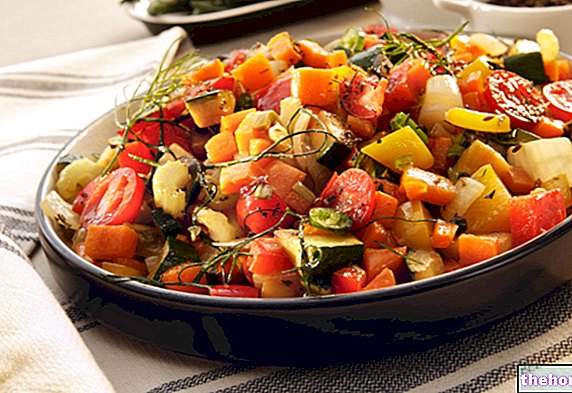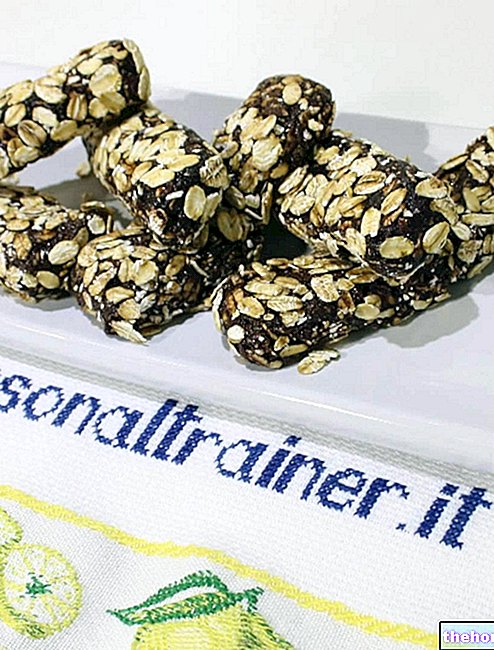Today we will have a lot of fun preparing a dish that has all the requisites to be considered "molecular" in all respects! We were amazed to see how to make fake caviars and molecular arias! So today we are going to put together some of these basics to prepare a dish like a true chef! My suggestion is smoked salmon (homemade) with lemon air and mint caviar!
Video of the Recipe
Problems with playing the video? Reload the video from youtube.
Identity Card of the Recipe
- 118 KCal Calories per serving
-
Ingrediants
For the emulsion
- 1 tablespoon of balsamic vinegar glaze
- 1 tablespoon of extra virgin olive oil
- 1 tablespoon of water
For the main dish
- 2 250g slices of fresh salmon
- 1 tablespoon of extra virgin olive oil
- About 100 ml of dry white wine
For the fake Mint Caviar and for the Solution
- 4 g of calcium chloride
- 0.5 g of baking soda
- 1 g of alginic acid
- 100 ml (for the caviar) + 150 ml (for the solution) of water
- A few mint leaves
For the lemon air
- Untreated filtered lemon juice
- 2 tablespoons of water
- 2 g of soy lecithin
Materials Needed
- Bowls of various sizes
- Colander
- Precision scale
- Pan with lid
- Scoop
- Immersion mixer
- Becker
- Syringe without needle
- Pipette (optional)
Preparation
- First, smoke the salmon following the instructions on THIS VIDEO.
What does home smoking consist of?
Smoking at home is much easier than you might think. Just follow the advice below. Line a bowl with aluminum foil. Fill the bowl with dry aromatic herbs (such as sage, rosemary, thyme, oregano) and dry leaves (eg bay leaves, dried garlic leaves). Turn on the fire and blow to burn all the aromatic woods. As soon as the fire goes out, thick smoke will be created. Immediately return the bowl to the lowest part of the oven (switched off!). Place the food to be smoked (salmon, in this case) on a rack positioned immediately above the bowl and close the oven door. Do not turn on the oven! Leave the food to smoke for 1-3 hours, possibly lighting the fire a couple of times for more intense smoking.- Heat a non-stick pan and pour a drop of extra virgin olive oil. Brown the smoked salmon slices over high heat, a couple of minutes on each side. Then, deglaze with the dry white wine, let the alcohol evaporate and continue cooking over low heat for about ten minutes.
- Meanwhile, prepare the mock mint caviar to go with the salmon. Mix the mint leaves with the water. Filter everything through a tightly meshed colander to remove the mint pieces. Pour the filtered liquid back into the beaker and add the alginic acid and baking soda. Mix everything again and pour the mixture into a bowl. Wait for the foam to disappear.
- Meanwhile, prepare the solution in which spherification will take place. In a bowl, dissolve the calcium chloride in the water.
- Take the mint smoothie with a syringe and drop it in the solution of water and calcium chloride. The drops of mint essence will spherify instantly. Wait about 30 seconds to obtain small spheres formed by a stable coating gel and a liquid core.
Why and how did the spheres deform?
The alginate, in contact with calcium ions, polymerizes giving rise to these particular spheres, called "drop" or "fake caviar".
Sodium alginate is formed by long chains of polysaccharides that have sodium on the sides. In contact with a solution of water and calcium salts, a substitution occurs: sodium replaces calcium and, having double valence, holds two chains together. In this way, the various polysaccharide chains intertwine with each other to form a fabric.- Remove the spheres obtained (fake molecular caviar) with a caviar spoon or with a sieve and wash them gently in cold water. The mint balls are ready.
- Now prepare the lemon molecular air. Squeeze the juice from a lemon and strain it. Pour the juice into a beaker, add the water and soy lecithin. Immerse the hand blender and mix everything until a stable foam is formed. As soon as the foam forms, tilt the beaker and blend on the surface.
Did you know that
Soy lecithin is the main ingredient for making the so-called "arias" or "foams" in molecular cuisine. Soy lecithin - available in the form of granules or powder - is a phospholipid, a molecule composed of a polar head (water-soluble) and a hydrophobic tail (not soluble in water). For this particular structure, lecithin is considered an excellent emulsifier or a substance capable of binding non-mixable substances. Among the pairs of non-mixable substances, we can find water and oil or air and water. In the preparation of the air, the ability of lecithin to emulsify water and air is exploited.- Now prepare the accompanying emulsion. In a bowl, mix the balsamic vinegar glaze with the oil and water. Collect the solution with a micro pipette.
- In the meantime, the salmon will be ready to serve.
- Serve the salmon slices with the mint drops (fake caviar) and the lemon mousse (air). Skewer the salmon with the micro pipette full of balsamic emulsion. Serve.
Alice's comment - PersonalCooker
Molecular cuisine is as whimsical as it is fun! Once you get the hang of it you will no longer be able to do without it to create increasingly complex molecular dishes! Few ideas? Don't miss my next molecular cooking recipes!Nutritional values and Health Comment on the recipe
Smoked Salmon with Lemon Air and Mint Caviar is a dish rich in omega3 essential fatty acids. It is not too energetic and also lends itself to a low-calorie diet; moreover, it is suitable for diets against dyslipidemia, hypertension and diabetes. The proteins are abundant and have a high biological value. Carbohydrates and fibers are instead absent.
The average portion of Smoked Salmon with Lemon Air and Mint Caviar could range between 200 and 300g (235-350kcal).




























